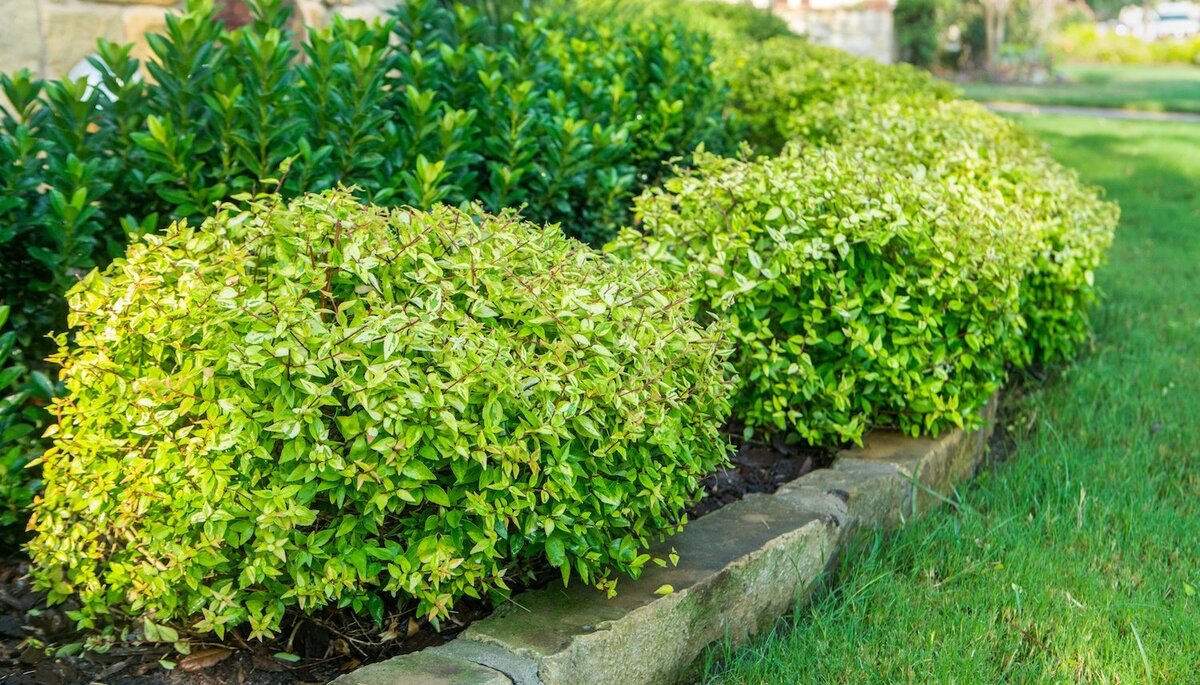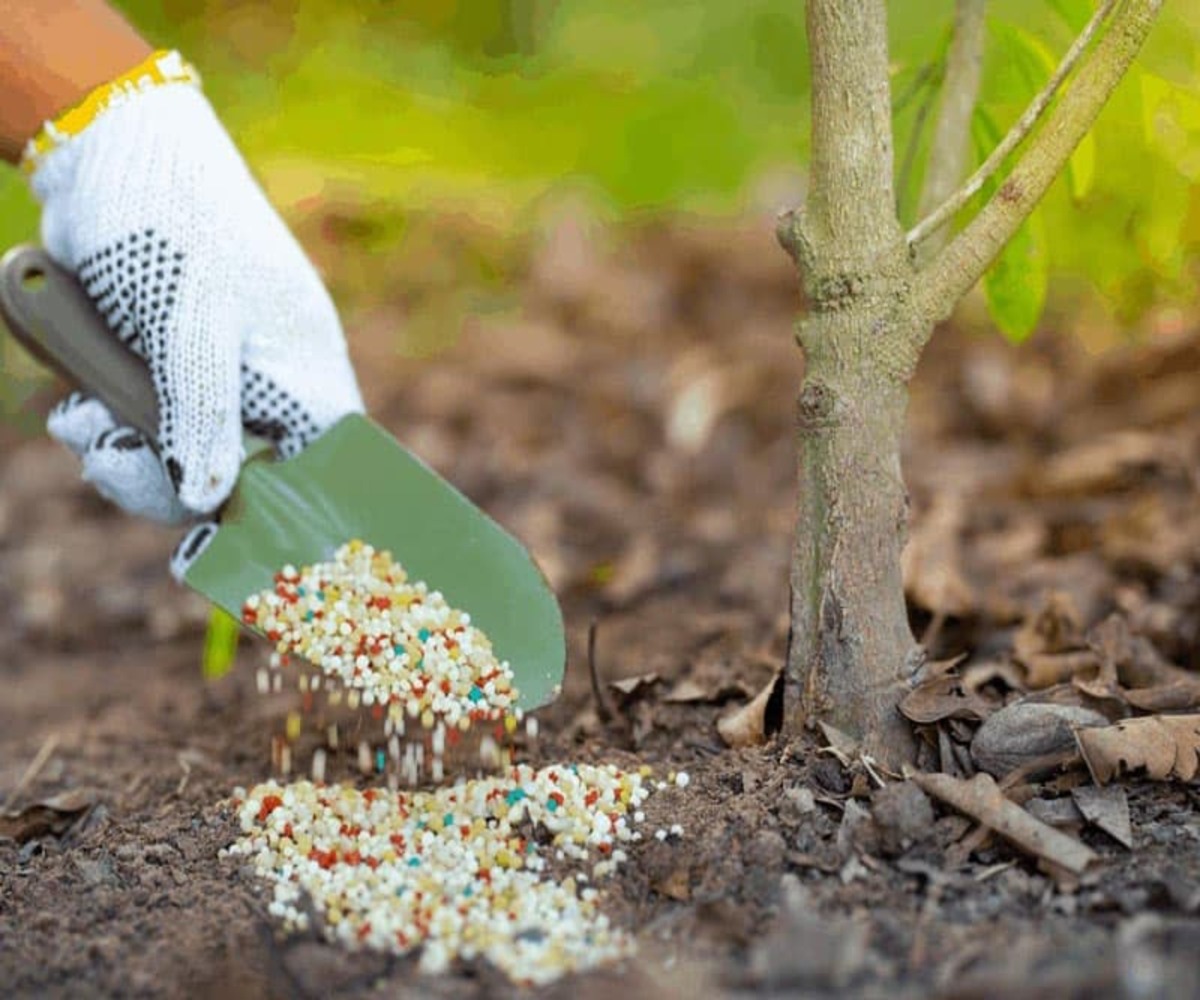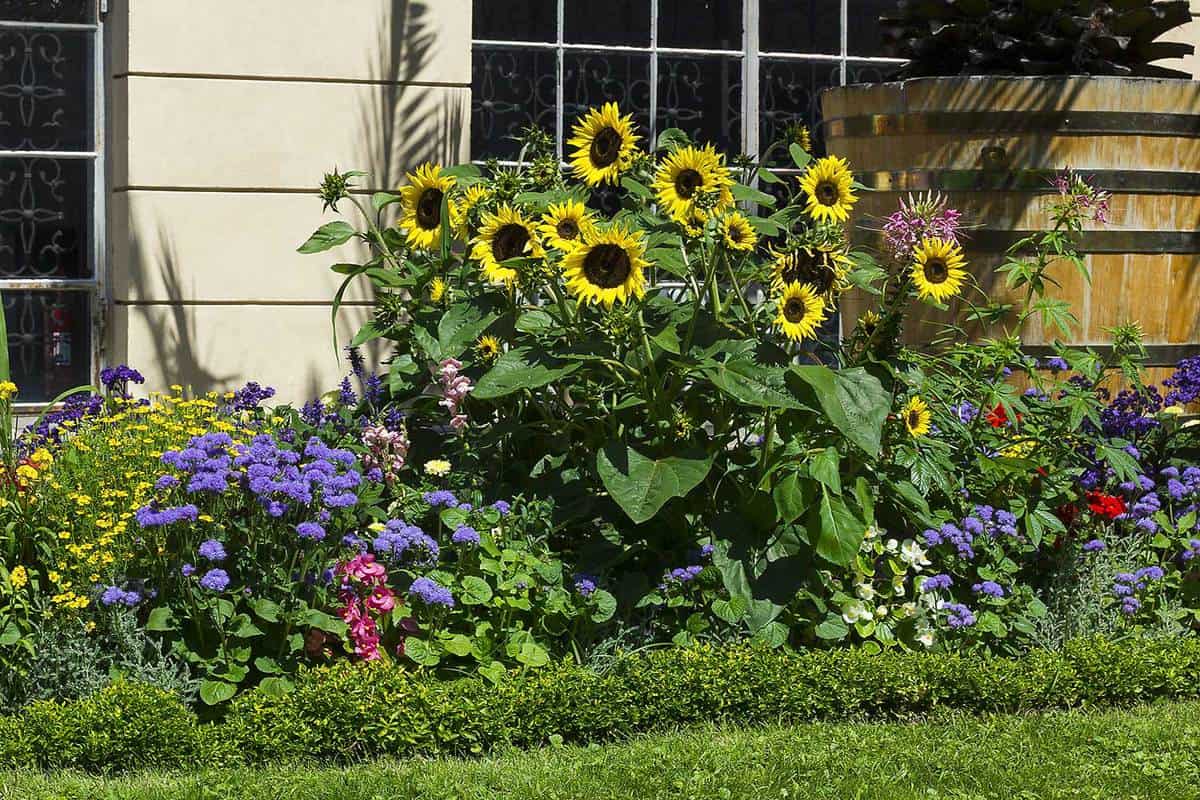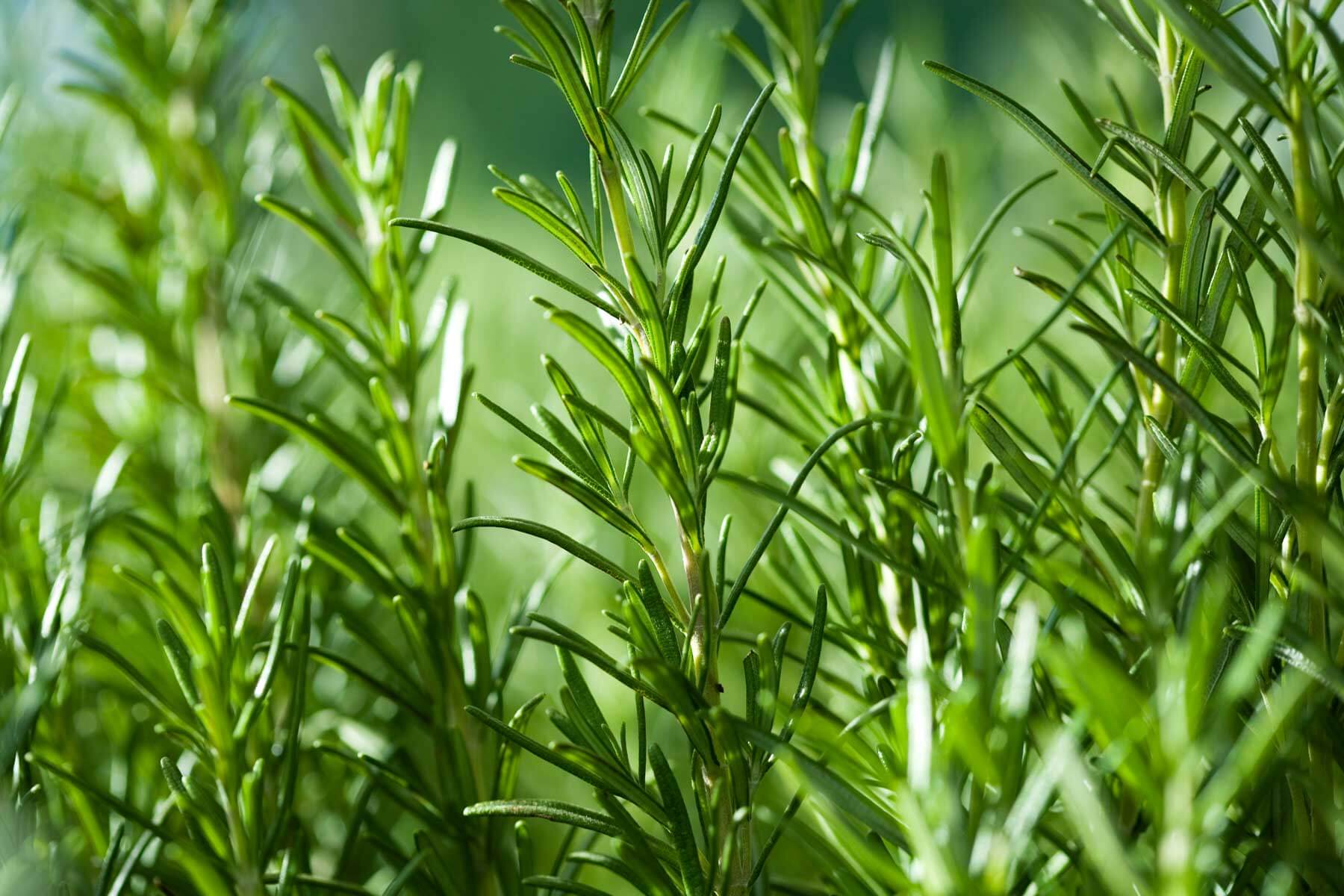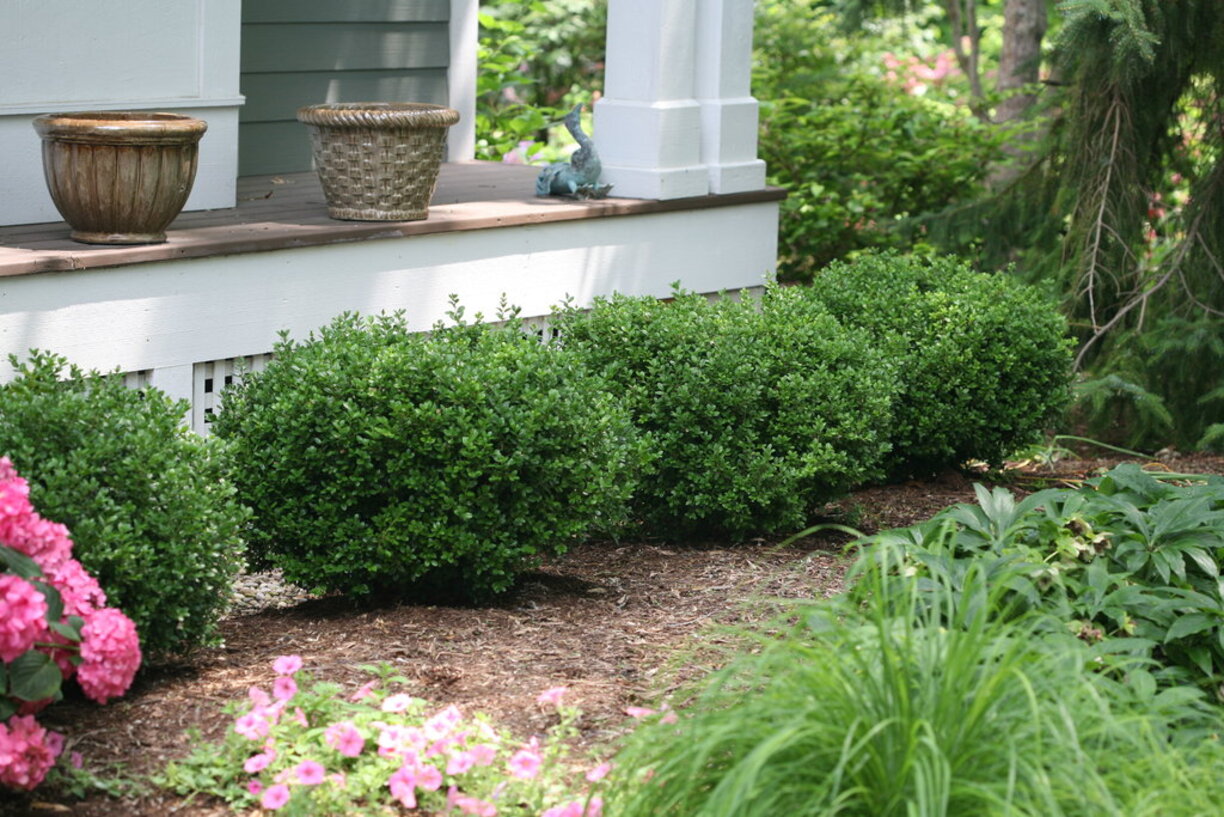Home>Gardening Techniques>Plant Care>Where To Plant Dogwood Shrubs


Plant Care
Where To Plant Dogwood Shrubs
Modified: February 10, 2024
Discover expert tips and advice on plant care for dogwood shrubs. Learn where to plant these beautiful shrubs to ensure their health and vitality.
(Many of the links in this article redirect to a specific reviewed product. Your purchase of these products through affiliate links helps to generate commission for Chicagolandgardening.com, at no extra cost. Learn more)
Table of Contents
Introduction
Welcome to the world of dogwood shrubs! These beautiful and versatile plants can add a touch of elegance to any garden or landscape. Whether you’re a seasoned gardener or just starting out, knowing where to plant dogwood shrubs is an essential step towards ensuring their health and vibrancy.
With their stunning blossoms and attractive foliage, dogwood shrubs can be the highlight of any outdoor space. However, finding the perfect spot to plant them involves considering various factors such as sunlight, soil conditions, moisture levels, and available space. By understanding these factors and making informed decisions, you can create an optimal environment for your dogwood shrubs to thrive.
In this article, we will explore the key factors to consider when determining where to plant dogwood shrubs. We will also discuss some popular varieties and suggest the best places to showcase their beauty in your garden.
So, let’s dive in and discover how to create the perfect home for your dogwood shrubs!
Factors to Consider
Before deciding where to plant your dogwood shrubs, it’s important to consider a few key factors that will influence their growth and overall health. By taking these factors into account, you can create an environment that allows your dogwood shrubs to flourish.
Sunlight Requirements: Dogwood shrubs thrive in areas with partial shade to full sun exposure. Ideally, they should receive about four to six hours of direct sunlight each day. While some varieties can tolerate more shade, insufficient sunlight can lead to weak growth and fewer flower blossoms. Therefore, it’s essential to choose a planting location that provides the right amount of sunlight for your dogwood shrubs.
Soil Conditions: Dogwood shrubs prefer well-drained soil that is rich in organic matter. They thrive in slightly acidic to neutral soil with a pH level between 5.5 and 7.5. Conduct a soil test to determine the pH level and adjust it if necessary. Additionally, ensure that the soil is loose and fertile to promote healthy root development and overall plant growth.
Moisture Needs: While dogwood shrubs require consistent moisture, they are susceptible to root rot if the soil becomes waterlogged. Adequate drainage is crucial for preventing water accumulation around the roots. Regular watering is essential, especially during dry spells, to keep the soil moist but not soggy. Mulching around the shrubs can help retain moisture and regulate soil temperature.
Space and Location: Consider the mature size and shape of the dogwood shrub when deciding where to plant it. Give each shrub enough room to grow and spread without overcrowding or obstructing nearby plants or structures. Additionally, choose a location that complements the overall aesthetic of your garden and provides a visually appealing backdrop for the shrubs.
Pest and Disease Resistance: Some dogwood shrubs are more susceptible to pests and diseases than others. It’s important to select varieties that are known for their resistance to common problems such as powdery mildew, dogwood anthracnose, and scale insects. Choosing disease-resistant varieties will reduce the risk of plant damage and the need for extensive maintenance.
By taking these factors into consideration, you can ensure that your dogwood shrubs have the best possible chance of thriving and adding beauty to your outdoor space.
Sunlight Requirements
When it comes to planting dogwood shrubs, providing the right amount of sunlight is crucial for their growth and overall health. Dogwood shrubs thrive in areas with partial shade to full sun exposure, but the ideal amount of sunlight may vary depending on the specific variety. Understanding their sunlight requirements will help you choose the best location for your dogwood shrubs.
On average, dogwood shrubs require about four to six hours of direct sunlight each day. This is necessary for photosynthesis, which enables the plants to produce energy for growth and flower formation. Without sufficient sunlight, dogwood shrubs may become weak, have stunted growth, and produce fewer flower blossoms.
It’s important to assess the available sunlight in your garden before deciding where to plant your dogwood shrubs. Observe the area at different times of the day, taking note of the sun’s path and any potential sources of shade, such as trees or buildings. Consider the shading patterns throughout the year, as they may change due to the seasons or nearby structures.
If your garden has limited access to full sun, don’t worry! Some dogwood varieties tolerate more shade than others. For areas with partial shade, select varieties such as the Kousa dogwood (Cornus kousa) or the Pagoda dogwood (Cornus alternifolia). These varieties can thrive in areas with dappled sunlight or filtered shade, allowing you to enjoy their stunning blossoms even in shadier locations.
On the other hand, if your garden offers ample sunlight, you can opt for varieties that require full sun exposure. The Flowering dogwood (Cornus florida) and the Redosier dogwood (Cornus sericea) are examples of full-sun-loving varieties that will reward you with an abundance of vibrant flowers and attractive foliage.
Keep in mind that excessive heat and intense sunlight can also impact the health of dogwood shrubs. In regions with hot summers, providing some afternoon shade or protection from harsh afternoon sun rays can prevent stress and sunburn on the plant’s foliage.
In summary, understanding the sunlight requirements of dogwood shrubs is essential for their successful growth. By providing the right amount of sunlight, whether it’s four to six hours of direct sun or partial shade, you can create an optimal environment for your dogwood shrubs to thrive and adorn your garden with their magnificent beauty.
Soil Conditions
The soil conditions in which dogwood shrubs are planted play a vital role in their overall health and growth. These plants thrive in well-drained soil that is rich in organic matter. Understanding and optimizing the soil conditions will help ensure that your dogwood shrubs receive the nutrients they need to flourish.
One important factor to consider is the pH level of the soil. Dogwood shrubs prefer slightly acidic to neutral soil with a pH level ranging from 5.5 to 7.5. Conducting a soil test is recommended to determine the pH level of your garden soil. If the pH is outside the preferred range, amendments can be made to adjust it accordingly.
Organic matter, such as compost or well-rotted manure, should be added to the soil when planting dogwood shrubs. This enriches the soil, improves its structure, and enhances its water-holding capacity. Incorporating organic matter also promotes beneficial microbial activity, which aids in breaking down nutrients and making them more accessible to the plants’ roots.
Well-drained soil is essential for dogwood shrubs, as they prefer not to have wet feet. Ensure that the soil has proper drainage by planting them in raised beds or amending the existing soil with sand or gravel to enhance drainage. This will prevent waterlogging, which can lead to root rot and other related issues.
It’s also important to monitor the moisture levels in the soil. While dogwood shrubs require consistent moisture, overly saturated soil can be detrimental to their health. Adequate watering should be done, especially during dry spells, to keep the soil moist but not overly wet. Mulching around the base of the shrubs can help regulate soil moisture levels and prevent evaporation.
Regularly monitoring the soil conditions is crucial for maintaining the health of your dogwood shrubs. Keep an eye out for signs of poor drainage, such as standing water or frequent wilting of the plant, as it may indicate issues with the soil. Adjustments can be made by adding drainage components or amending the soil as necessary.
In summary, providing the right soil conditions for your dogwood shrubs is essential for their overall well-being. By ensuring proper drainage, maintaining the desired pH level, and incorporating organic matter, you can create an environment that supports healthy root development and allows your dogwood shrubs to thrive and beautify your garden.
Moisture Needs
Proper moisture levels are crucial for the health and growth of dogwood shrubs. While these plants require consistent moisture to thrive, it’s important to find the right balance and avoid overwatering, as this can lead to root rot and other issues. Understanding the moisture needs of dogwood shrubs is key to maintaining their vitality.
Dogwood shrubs prefer well-drained soil that is moist but not overly saturated. When planting dogwood shrubs, it’s important to ensure that the soil has good drainage to prevent waterlogging. This can be achieved by incorporating organic matter, such as compost or well-rotted manure, into the soil to improve its structure and water-holding capacity.
Regular watering is necessary, especially during dry spells or hot summer months when the soil tends to dry out more quickly. Water the shrubs deeply, ensuring that the entire root zone is moistened. Avoid shallow watering, as this encourages shallow root growth and makes the plant more susceptible to stress during periods of drought.
However, it’s equally important to avoid overwatering the dogwood shrubs. Excessive moisture can lead to root rot and fungal diseases. To determine when to water, check the moisture level of the soil by inserting your finger about an inch deep. If it feels dry, it’s time to water. Adding a layer of mulch around the base of the shrubs can help retain soil moisture and reduce evaporation.
In addition to regular watering, dogwood shrubs can benefit from occasional deep watering sessions. This involves thoroughly saturating the soil, allowing the water to penetrate deep into the root zone. Deep watering encourages the roots to grow deeper, making the plant more resilient to drought conditions.
While dogwood shrubs require consistent moisture, they can tolerate short periods of dry soil. However, prolonged drought or insufficient watering can stress the plant and lead to wilting, leaf drop, and poor flower production. Regularly monitor the soil moisture levels and adjust watering accordingly.
By maintaining the proper moisture levels in the soil, you can ensure the health and vitality of your dogwood shrubs. Consistent and appropriate watering practices, along with good soil drainage and the use of mulch, will create an environment that promotes healthy growth and allows these beautiful shrubs to thrive.
Space and Location
When deciding where to plant your dogwood shrubs, considering the space and location is crucial. Giving these shrubs enough room to grow and selecting an appropriate location will contribute to their overall health, aesthetics, and functionality in your garden or landscape.
First, consider the mature size and shape of the dogwood shrub. Depending on the variety, dogwood shrubs can range in height from 6 to 12 feet, with a similar spread. Ensure that you plant them in an area where they will have enough space to grow without being crowded or overshadowing nearby plants or structures.
Additionally, consider the growth habit of the specific dogwood variety you have chosen. Some varieties, such as the Pagoda dogwood (Cornus alternifolia), have a spreading habit and can reach a width that is greater than their height. Take this into account when selecting a location to avoid encroaching on neighboring plants or obstructing pathways.
The location of your dogwood shrubs should also complement the overall design and aesthetic of your garden or landscape. These shrubs can serve as focal points, adding beauty and visual interest to your outdoor space. Select a location that provides a visually appealing backdrop for the shrubs, whether it’s against a fence, near a water feature, or in a particular garden bed.
Consider the surrounding elements and the purpose of the space where you plan to plant the dogwood shrubs. If you want to create a welcoming entryway, placing the shrubs along a pathway or near the entrance can enhance the curb appeal and provide an inviting atmosphere. Alternatively, if you’re looking to add color and texture to a flower bed or border, incorporating dogwood shrubs can create a stunning contrast against other plants.
Another factor to consider is the available sunlight in the chosen location. As mentioned earlier, dogwood shrubs require partial shade to full sun exposure, depending on the variety. Ensure that the location you choose provides the appropriate amount of sunlight for your dogwood shrubs to thrive.
If your yard has limited space, container gardening is a great option for growing dogwood shrubs. By planting them in larger pots or containers, you can enjoy their beauty on a patio, deck, or balcony. Just make sure the containers have proper drainage to prevent waterlogged soil.
In summary, when deciding where to plant your dogwood shrubs, consider their space needs, the growth habits of the specific variety, and how the location aligns with your overall garden design. By giving them enough space to grow and selecting a suitable location, you can create an aesthetically pleasing and functional environment for your dogwood shrubs to thrive and enhance your outdoor space.
Dogwood Varieties
Dogwood shrubs come in a variety of stunning options, each with its unique characteristics and appeal. Understanding the different dogwood varieties will help you choose the one that best suits your preferences and the specific conditions of your garden. Let’s explore some popular dogwood varieties:
- Flowering dogwood (Cornus florida): This is one of the most well-known and beloved dogwood varieties. It produces showy flowers in shades of pink, white, or red during the spring. The flowers are followed by attractive foliage that turns vibrant shades of red in the fall. The flowering dogwood is known for its elegant branching structure, making it a beautiful focal point in any garden.
- Kousa dogwood (Cornus kousa): Native to Japan and Korea, the Kousa dogwood is a popular choice for its exceptional beauty and disease resistance. It blooms slightly later than the flowering dogwood, typically in late spring or early summer. It features white or cream-colored flowers, and its fruit resembles small raspberry-like orbs. The Kousa dogwood also boasts stunning autumn foliage, with leaves turning vibrant shades of red, orange, and purple.
- Pagoda dogwood (Cornus alternifolia): This dogwood variety showcases a unique layered branch structure, giving it an architectural appeal. It produces clusters of creamy white flowers in the spring, which turn into bluish-black berries in late summer. The Pagoda dogwood thrives in partially shaded areas and is an excellent choice for adding texture and visual interest to your garden.
- Redosier dogwood (Cornus sericea): This variety is known for its vibrant red stems, which provide a striking contrast against the winter landscape. It produces clusters of white flowers in the spring and blue-white berries in the summer, attracting birds and other wildlife. The Redosier dogwood is a versatile and hardy shrub that can tolerate various soil conditions, making it a popular choice for naturalistic gardens and erosion control.
These are just a few examples of the many dogwood varieties available, each with its own unique features and adaptability. When selecting a dogwood variety, consider factors such as the size, color, and blooming time that align with your preferences and the conditions of your garden. Additionally, check for disease resistance, as certain varieties are more resistant to common dogwood diseases such as powdery mildew and dogwood canker.
By choosing the right dogwood variety for your garden, you can add beauty, color, and interest throughout the seasons, enhancing the overall aesthetic appeal of your outdoor space.
Best Places to Plant Dogwood Shrubs
When it comes to planting dogwood shrubs, selecting the right location can make all the difference in their growth and visual impact. Here are some of the best places to plant dogwood shrubs in your garden:
- Front Yard: Planting dogwood shrubs in the front yard can instantly enhance your home’s curb appeal. They can be strategically placed near the entrance, alongside the driveway, or as a border plant to create a welcoming and eye-catching display.
- Backyard: Dogwood shrubs are equally suitable for the backyard, where they can create a tranquil and inviting atmosphere. Plant them near a patio or deck area to provide shade and a touch of natural beauty for outdoor gatherings and relaxation.
- Along Walkways or Pathways: Placing dogwood shrubs along walkways or pathways adds a pop of color and creates a charming and inviting entryway to your garden. The shrubs can frame the path and create a sense of direction while providing a beautiful backdrop for strolling.
- Flower Beds and Borders: Dogwood shrubs can play a complementary role in flower beds and borders. Their vibrant flowers and attractive foliage can serve as a backdrop for low-growing flowers or provide contrast among other shrubs and perennials. Consider their mature size and growth habit to ensure they do not overshadow or overcrowd neighboring plants.
- Under Shade Trees: Many dogwood varieties thrive in partially shaded areas, making them an excellent choice for planting under shade trees. Their blooms can brighten up the understory and provide some color and interest in areas where other plants may struggle due to limited sunlight.
When deciding where to plant dogwood shrubs, it’s important to consider the specific requirements of the variety you have selected. Some dogwood varieties prefer partial shade, while others thrive in full sun. Assess the sunlight conditions in your desired planting location and ensure it aligns with the needs of the chosen variety.
Additionally, consider the surrounding elements and the overall design aesthetic of your garden. The location you choose should provide a visually pleasing backdrop for the dogwood shrubs and complement the other plants and structures in your outdoor space.
By carefully selecting and planting dogwood shrubs in these ideal locations, you can create a visually stunning garden with pops of color, texture, and natural beauty that will delight you and your visitors throughout the seasons.
Front Yard
The front yard is often considered the showcase of your home, and planting dogwood shrubs in this area can make a beautiful and impactful statement. Here are some ideas on where and how to plant dogwood shrubs in your front yard:
Near the Entrance: Planting dogwood shrubs near the entrance of your home creates a warm and inviting atmosphere for both visitors and passersby. This can be done by flanking the front door with one or two dogwood shrubs or lining a pathway leading to the entrance with a row of these beautiful flowering shrubs. The pops of color from the blossoms will create a welcoming entry point to your home.
Along the Driveway: If you have a driveway leading to your house, consider planting dogwood shrubs along its edges. This will add visual interest and beauty to the space while softening the lines of the driveway and connecting it to the surrounding landscape. Plant the shrubs in a staggered formation to create a natural and seamless flow.
As a Border Plant: Dogwood shrubs can be used as border plants to delineate the edges of your front yard or garden beds. Their vibrant blossoms and attractive foliage will provide a stunning backdrop for other plants in the border. Choose compact or dwarf dogwood varieties for smaller spaces, or opt for taller varieties to create a more dramatic effect.
In Foundation Plantings: Consider incorporating dogwood shrubs into your foundation plantings, which are the plants that are closest to the house. These shrubs can add vertical interest and visual appeal to the front of your home, breaking up the monotony of the foundation wall. Place them strategically to cover unsightly areas or to frame windows and doorways.
With Companion Plants: Pairing dogwood shrubs with other plants can create a harmonious and visually appealing front yard. Consider planting low-growing perennials or groundcovers at the base of the dogwood shrubs to fill in the gaps and add a complementary color palette. Hostas, heucheras, and ferns are excellent choices that thrive in partial shade, making them suitable companions for dogwood shrubs.
Ensure that the planting location in your front yard meets the specific sunlight and soil requirements of the dogwood shrubs you have chosen. Also, consider the mature size and growth habit of the variety to ensure it fits well within the available space without overcrowding or obstructing other plants or structures.
By carefully selecting the placement and incorporating dogwood shrubs into your front yard, you can create a visually captivating and welcoming entrance that adds charm and curb appeal to your home.
Backyard
The backyard is a space where you can create a private oasis, and planting dogwood shrubs in this area will add beauty and tranquility to your outdoor retreat. Here are some ideas on where and how to plant dogwood shrubs in your backyard:
Near Patios and Decks: If you have a patio or deck in your backyard, consider planting dogwood shrubs nearby. Their lush foliage and vibrant blossoms will provide a pleasant backdrop and add a touch of natural beauty to your outdoor seating and entertaining areas. Depending on the size of your space, you can plant a single shrub or create a small grouping for a more impactful display.
As a Screen or Privacy Hedge: Dogwood shrubs can be used to create a natural screen or privacy hedge in your backyard. Plant them along the property line or around areas where you desire more seclusion, such as a patio, swimming pool, or outdoor relaxation space. Choose taller varieties and plant them in a row with the appropriate spacing to allow for their mature growth.
Around Garden Structures: Enhance the aesthetics of your backyard by planting dogwood shrubs around garden structures, such as trellises, arbors, or gazebos. The shrubs can provide a softening effect and create a beautiful transition between the hardscape elements and the natural landscape. Consider training the branches to grow and intertwine with the structures for a whimsical and romantic look.
Under Shade Trees: If you have large shade trees in your backyard, consider planting dogwood shrubs underneath them. Most dogwood varieties can thrive in partially shaded areas, making them a perfect choice for these spots. The filtered sunlight and dappled shade will create a cool and serene environment, and the dogwood shrubs will add a burst of color and interest to the shade garden.
As Specimen Plants: Select a prominent spot in your backyard to showcase a single dogwood shrub as a specimen plant. This can be near the center of a circular lawn, at the end of a garden path, or in an area where it can be admired from multiple viewpoints. The unique branching structure and vibrant blooms of the dogwood shrub will serve as a focal point, drawing attention and adding intrigue to your backyard.
When planting dogwood shrubs in your backyard, ensure that you provide the appropriate sunlight and soil conditions for the specific dogwood variety you have chosen. Also, consider the mature size of the shrubs to ensure they have enough space to grow and flourish without overcrowding other plants or structures.
By strategically incorporating dogwood shrubs into your backyard, you can create a peaceful and visually appealing outdoor space that invites relaxation and enjoyment of nature’s beauty.
Along Walkways or Pathways
Planting dogwood shrubs along your walkways or pathways is a fantastic way to add beauty, color, and a touch of elegance to your outdoor space. Here are some ideas on how to incorporate dogwood shrubs along your walkways or pathways:
Creating a Visual Guide: Placing dogwood shrubs on either side of a walkway or pathway not only adds aesthetic appeal but also serves as a visual guide. The shrubs act as living markers, directing the eye and creating a defined path. This is especially useful if you have a winding or meandering walkway where it may be helpful to visually guide visitors along the route.
Providing Shade and Interest: Dogwood shrubs planted alongside walkways or pathways can provide shade and relief from the sun during the warmer months. Their lush foliage and spreading branches create a beautiful canopy, enhancing the comfort of walking down the path on a sunny day. Additionally, the vibrant blossoms and attractive foliage will provide continuous interest and color as you move along the path.
Adding Fragrance: Consider planting fragrant varieties of dogwood shrubs along your walkways or pathways. They will release delightful scents as you brush past them, adding another sensory element to your outdoor experience. Fragrant varieties such as the Fragrant Dogwood (Cornus florida ‘Rubra’) or the Cornelian Cherry Dogwood (Cornus mas) are excellent choices for this purpose.
Creating a Tunnel Effect: For a more dramatic and whimsical effect, you can plant a row of dogwood shrubs on each side of a walkway, allowing their branches to eventually meet overhead. This creates a tunnel-like effect, adding a sense of enchantment and creating an intimate and magical walkway experience.
Choosing Low-Growing Varieties: If you have a narrow walkway or pathway, consider selecting low-growing varieties of dogwood shrubs. This will prevent them from encroaching on the path or obstructing easy passage. Compact varieties like the Dwarf Dogwood (Cornus canadensis) or the Tatarian Dogwood (Cornus alba ‘Sibirica’) are great options for adding beauty without overwhelming the space.
When planting dogwood shrubs along walkways or pathways, ensure that they are placed at an appropriate distance to allow for comfortable passage. Consider the mature size and growth habit of the chosen variety, ensuring that the branches will not impede the path or create potential tripping hazards.
By incorporating dogwood shrubs along your walkways or pathways, you can create a captivating and inviting passage that adds beauty, fragrance, and interest to your outdoor space.
Flower Beds and Borders
Dogwood shrubs can be a stunning addition to flower beds and borders, adding splashes of color, texture, and height to these areas. Here are some ideas on how to incorporate dogwood shrubs into your flower beds and borders:
Creating a Backdrop: Use dogwood shrubs as a backdrop for your flower beds or borders. Their vibrant blossoms and attractive foliage provide a striking contrast against the lower-growing flowers and plants in the foreground. Choose dogwood varieties with different bloom times to ensure continuous color throughout the growing season.
Adding Height and Structure: Dogwood shrubs can bring vertical interest and structure to your flower beds or borders. Choose taller varieties that will emerge above the surrounding plants, creating a sense of depth and dimension. The vertical branches and lush foliage of the dogwood shrubs add architectural elements to the overall design of the flower bed.
Creating Color Contrasts: Pair dogwood shrubs with flowers that have complementary or contrasting colors. For example, plant white-flowered dogwood varieties alongside purple or blue flowers to create a stunning color contrast. Similarly, pairing pink or red-flowering dogwood shrubs with yellow or orange blossoms can create a vibrant and eye-catching combination.
Extending the Blooming Season: Select dogwood varieties with different blooming times to extend the flowering season in your flower beds or borders. By choosing early-blooming, mid-season, and late-blooming varieties, you can ensure continuous blooms and vibrant colors throughout the spring and summer months.
Filling in Gaps: If you have gaps or empty spaces in your flower beds or borders, fill them in with dogwood shrubs. These shrubs can act as filler plants, adding beauty and interest to areas that may be lacking in color or foliage. Consider choosing dogwood varieties with evergreen or variegated foliage for year-round visual appeal.
When planting dogwood shrubs in flower beds or borders, consider the sunlight and soil conditions required by the specific variety. Ensure that the shrubs have enough space to grow and spread without overcrowding or shading out neighboring plants.
By incorporating dogwood shrubs into your flower beds and borders, you can create a visually stunning and dynamic landscape that bursts with color, texture, and dimension.
Under Shade Trees
Utilizing the space under shade trees is a clever way to maximize your garden’s potential, and planting dogwood shrubs in these areas can bring beauty and interest to what might otherwise be a challenging space. Here are some ideas on how to incorporate dogwood shrubs under shade trees:
Add a Pop of Color: Under shade trees, where sunlight may be limited, dogwood shrubs can bring a vibrant burst of color to the area. Their elegant blooms, available in shades of pink, white, and red, will brighten up the shady surroundings and provide a visual focal point.
Take Advantage of Partial Shade: Dogwood shrubs are an ideal choice for areas under shade trees as they thrive in partial shade. The dappled sunlight that filters through the branches of the tree provides just the right amount of light for these shrubs to flourish. Look for dogwood varieties that specifically state their tolerance for shade.
Create a Natural Understory: Planting dogwood shrubs under shade trees mimics the natural understory found in forests. This creates a layered and visually appealing landscape, as the tree canopy above provides a towering backdrop while the dogwood shrubs add texture and color lower down. This naturalistic look adds depth and interest to the garden.
Fill in Empty Spaces: Often, the area under shade trees can be bare and difficult to cultivate. Dogwood shrubs can fill in these empty spaces, covering the bare ground and preventing weeds from taking hold. Choose varieties that spread naturally or can be trained to fill in the area without interfering with the tree’s roots.
Combine with Shade-Tolerant Groundcovers: Pairing dogwood shrubs with shade-tolerant groundcovers can create a dynamic and low-maintenance planting scheme. Groundcovers such as hostas, ferns, or epimediums can fill in the space around the dogwood shrubs, providing textural contrast and adding layers of foliage beneath the shrubs.
When planting dogwood shrubs under shade trees, be mindful of the tree’s roots. Avoid disturbing the tree roots as much as possible, and choose dogwood shrub varieties with shallow root systems to minimize competition with the tree.
By taking advantage of the space under shade trees and incorporating dogwood shrubs, you can transform what may be a challenging area of your garden into a vibrant and captivating oasis.
Conclusion
Planting dogwood shrubs in your garden can elevate its beauty, bring an array of colors, and create a magical ambiance. By carefully considering factors such as sunlight requirements, soil conditions, moisture needs, and the appropriate space and location, you can ensure that your dogwood shrubs thrive and become eye-catching focal points in your outdoor space. With their elegant blossoms and attractive foliage, dogwood shrubs have the power to transform any garden or landscape.
Whether you choose to plant them in the front yard to enhance your home’s curb appeal, in the backyard to create a private oasis, along pathways for a captivating walkway, in flower beds and borders for added color and structure, or under shade trees to bring life to a shaded area, dogwood shrubs will undoubtedly add beauty and charm to your garden.
Remember to select the right dogwood variety that suits your specific preferences and the conditions of your garden. Some varieties are more tolerant of shade, while others prefer full sun exposure. Additionally, consider the mature size and growth habit of each variety to ensure the shrubs have ample space to grow. By providing the appropriate care, including proper watering, soil enhancements, and regular monitoring, you will help your dogwood shrubs flourish and thrive.
So, unleash your creativity and explore the many possibilities of where to plant dogwood shrubs. With their enchanting blooms, lush foliage, and versatility, these shrubs will bring joy and natural beauty to your garden for years to come.


